How Much (and How) do Participants Want to Pay for a Race? Payment Trends & Data Analysis
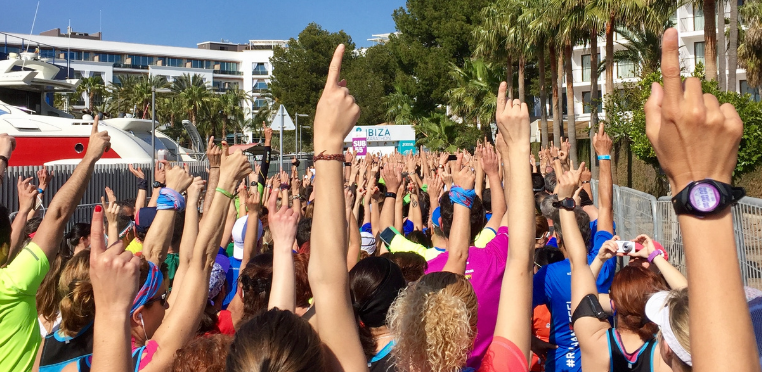
Technology is changing more rapidly than ever, with more and more transactions occurring digitally and online. In Sweden (where we are) at least, it is quite rare to see a note or coins anymore! People have gotten used to paying for everything online, and if you are shopping at a retail location, you don’t even have to bring your physical card anymore if you opt for a digital wallet payment.
This change can be observed throughout the endurance racing industry as well – it is common sense for athletes to pay for their online entry directly when they register. We wanted to see which types of payment methods are most popular today, and analyze how participants want to pay for races as well as how much they are willing to pay.
We put together this article using a blend of data analysis from the many transactions occurring through the RaceID platform combined with results from a recent participant survey (2023).
Payment Types – How Are Participants Buying Races (on RaceID)?
We looked at the last 90 days of registration data on the RaceID platform.
- Mastercard 56.4%
- Visa 40.0%
- Amex 4%
- Other 0.6%
We also asked our participants: How do you prefer to pay? Of 98 respondents, we got:
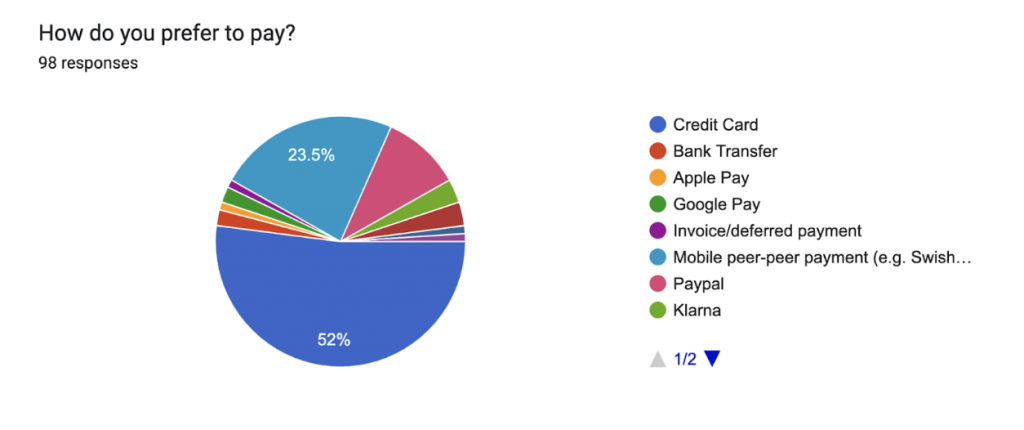
Conclusions:
Participants like paying with credit cards! Safe, easy, and secure – most card providers offer very good customer experience. The fees for this service are put onto the merchants – usually between 2.5 – 3% of the purchase value (usually this is then passed onto the customer by the merchant. At RaceID we incorporate it into the fee organizers pay us on each registration made). Additionally, 1 in 4 respondents like using peer-peer payments (like ‘Swish’ in Sweden for instance).
Take away learning for race organizers
Make sure your race can take online credit card payments – give your participants what they want or you’ll be losing out otherwise.Remember to budget for the Credit Card providers processing fees! Familiarity, security and ease are essential traits to go for with payments nowadays.
Future Payment Trends (in general)
According to research from Shopify there are a number of important e-commerce trends that are becoming increasingly prevalent:
- Online and offline payment methods blend, meaning that even if there are more people back spending money in bricks-and-mortar stores, they are now using more digital wallets and frictionless payments – which is predicted to double (to 8 trillion USD by 2024)
- Creators can receive in-app payments from followers. This is a big growing trend. If you are a content creator you can make money through the app of your choice – as many Tik-tok and Twitch users already are.
- Digital wallets are becoming more normal. 30% of all point of sale transactions are now made through digital wallets (Apple Pay, Google Pay, etc).
- Payment apps are the new lifestyle ‘super apps’. These are app that offer a range of service and shopping options all rolled into one. Expect to see more of these popping up.
- More buy now, pay later (BNPL) companies and services. This is set to become a large part of the market. More than 65% of merchants added this option to their checkouts in 2022, according to Global Payments (a commercial software company), and 1 in 4 payments are predicted to be BNPL in the coming years.
- QR codes are now commonplace – scanning codes is a quick, easy and hand-free way to shop. QR codes containing menu’s, coupons or special discounts are frequently found replacing website links. Instead of typing, shoppers are taken directly to the right place on the internet, and tracking codes for analytics can also be included to help identify usage and effectiveness of different campaigns, etc
Take away learning for race organizers
If you are planning to sell things at your event (on-site), then you need to consider that your participants may want to pay using their digital wallet. Many shoppers buy more when using digital payments too, when compared with using cash. Additionally, if your race has a large registration fee, make sure that your participants have the option of splitting the payments or using buy now, pay later services. Finally, make use of QR codes. This can be anything from race check-in to entry-on-the-day, to ordering post race food and drinks from the digital menu.
How Much Are Participants Willing to Pay for a Race?
The question in the Q2 2022 survey was: How much are you willing to pay for a race?
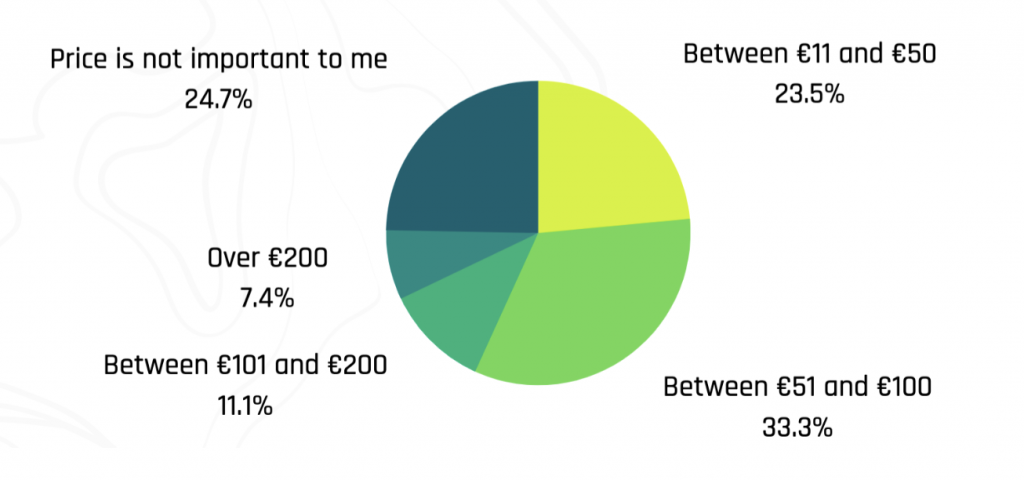
In Q1 2023 the two questions were:
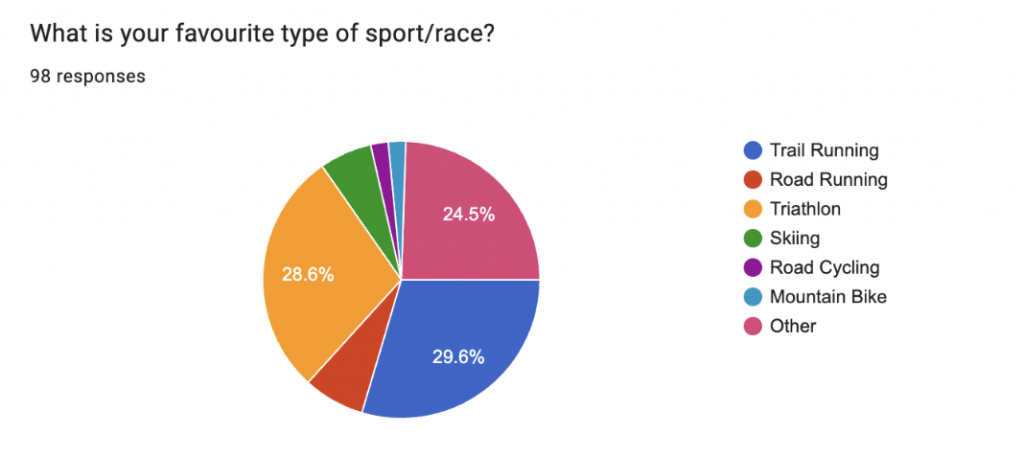
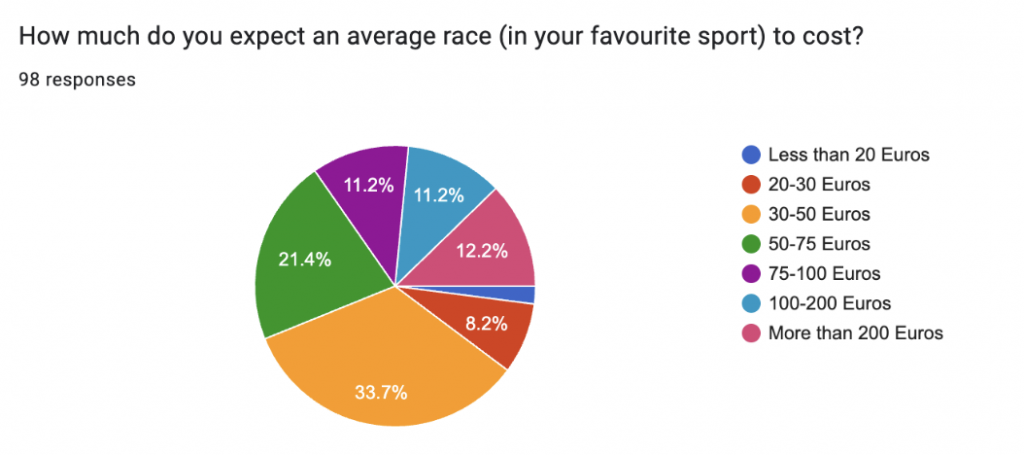
Conclusions:
In the 2022 survey, most participants are ‘willing’ to pay (on average) up to 100 Euro. Interestingly, there is a fairly large percentage that say that price is not important – therefore suggesting that experience or other aspects are more critical in the decision making process.
Favorite race types are Trail Running and Triathlon. Most (66%) people expect to pay between 30-100 euros, 33% of those being in the 30-50 euro range.
For Trail Runners: 15 of the 29 (52%) that said it was their favorite type of race, expect to pay between 30-50€, 17% expect 50-75€ and 14% expect to pay 75-100€. The remaining 13% is evenly split above and below these brackets.
For Triathletes: 10 of the 28 (36%) expected to pay more than 200€ – with 21% expecting 100-200€ in fees. 18% expected 50-75€.
Take away learning for race organizers
Price your race appropriately for your sport! Try to meet your participants’ expectations in terms of pricing. If you want to increase participation, target the most commonly expected price range. Perhaps you have to cut your budget a bit to get under the magic 100 Euro for your entry fee? Or perhaps you have a bit of wiggle room? If you are a race with a specific sport and are offering ‘an experience’ perhaps you are looking to target those that consider price not to be important. Learn more about how to set your entry fee in this article.
How Much are Participants Actually Paying for Races (on RaceID)?
We looked at the average price of races every week in the last four years (2019-2022, some 200 weeks of data). A few interesting statistics emerged.
Average price of a registration made on the platform (2019-2022): 589 SEK (approx. 53 Euros)
Standard Deviation of registrations (2019-2022): 323 SEK (29 Euros)
Standard Deviation as a percentage of the average: 54.8%
Graph showing moving average registration fee over last 4 years:
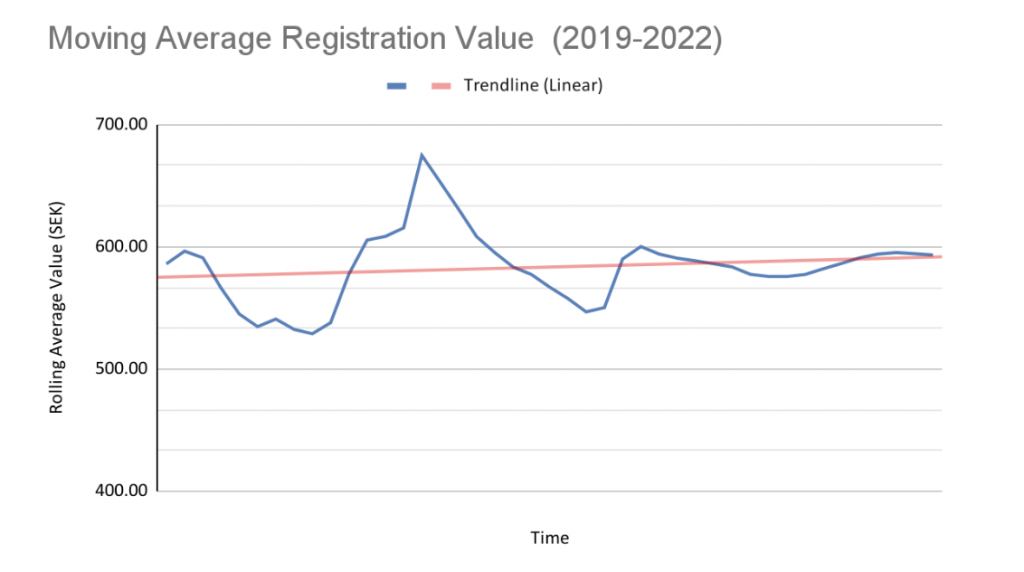
Conclusions:
The average price reflects the mean value of all races on the platform (around 50 euros), however, the standard deviation shows that the value of any given race can widely vary from this. One standard deviation is around 55% of the mean, meaning the data of all registration prices throughout the platform varies quite widely (from both low to high). In particular – races sold on the platform in Q1 for both 2020 and 2021 seem to vary significantly from the mean (many cheap virtual races or expensive races in these periods?)
The rolling average registration value was expected to show a strong trend of steadily increasing prices (as races increase price year-on-year), however, as seen from the graph above – this is clearly not the case. It dips in the summer of 2019 (summer races tend to be smaller/cheaper?) after which we see a large peak at the beginning of the pandemic (smaller, more expensive/exclusive races were not being canceled as frequently as others, hence skewing the average?), followed by another big drop in summer 2021. In 2022 the curve flattens out (as expected) as the average becomes smoothed out and regresses to the mean.
Take away learning for race organizers
Assess your pricing – is it average relative to the market? Is it expensive? Also, given your previous registration fee – perhaps it’s time to put your price up? Our data from the last few years show that prices have been stagnant in the main (see moving average trendline). This means that year-on-year organizers have been getting reduced revenue (even if selling out their races) after inflation and other measures are taken into account. Make sure you budget well (use this budget template!) for your race to ensure your entry fee can cover costs and bring you the revenue you need.
If you liked this article, read more about participant user behavior on RaceID see this article, and to find out more about what participants are looking for in races check out this report.
Did you find this article helpful? For more tips subscribe to our newsletter!


